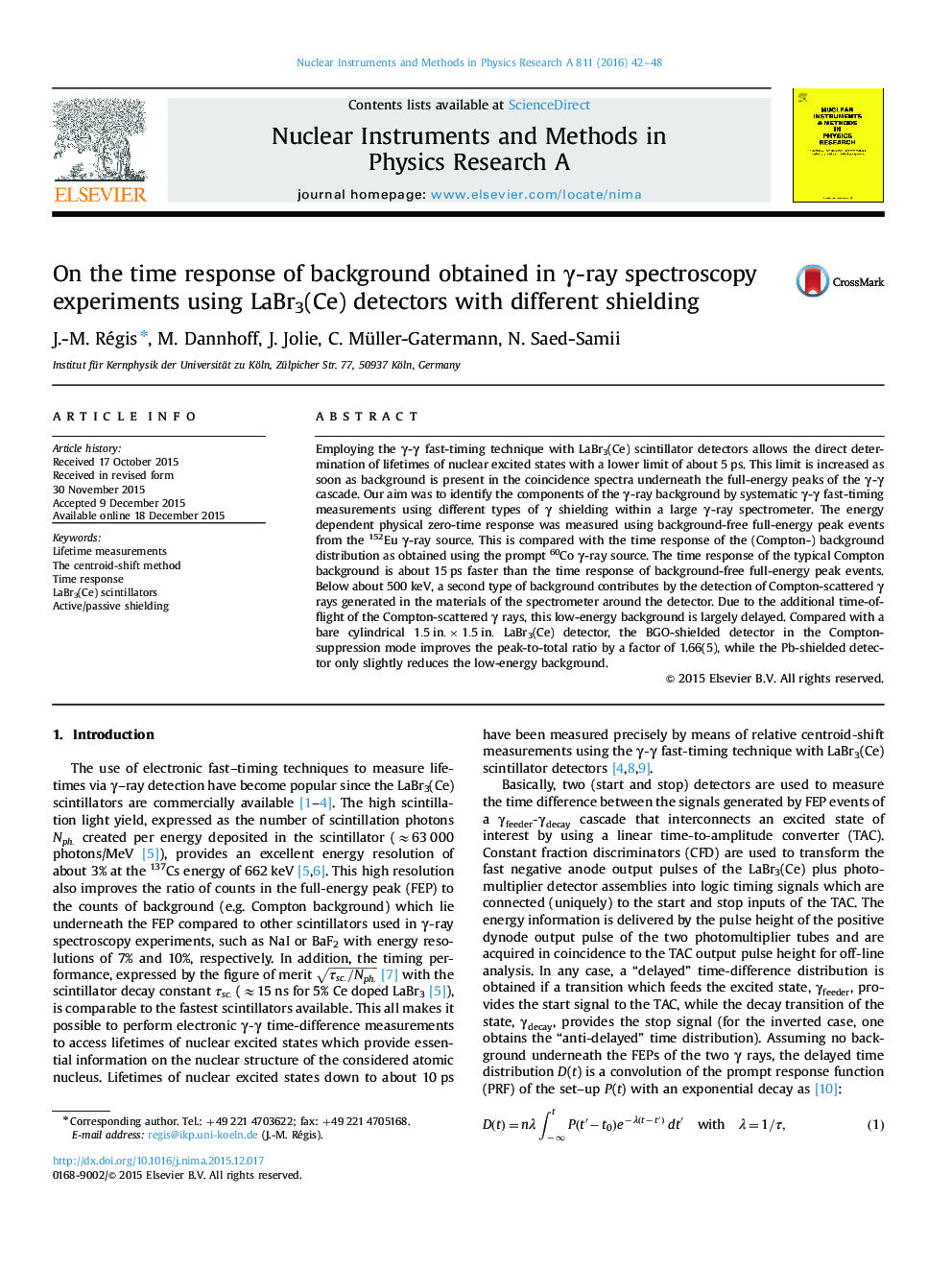| Article ID | Journal | Published Year | Pages | File Type |
|---|---|---|---|---|
| 1822230 | Nuclear Instruments and Methods in Physics Research Section A: Accelerators, Spectrometers, Detectors and Associated Equipment | 2016 | 7 Pages |
Employing the γ-γ fast-timing technique with LaBr3(Ce) scintillator detectors allows the direct determination of lifetimes of nuclear excited states with a lower limit of about 5 ps. This limit is increased as soon as background is present in the coincidence spectra underneath the full-energy peaks of the γ-γ cascade. Our aim was to identify the components of the γ-ray background by systematic γ-γ fast-timing measurements using different types of γ shielding within a large γ-ray spectrometer. The energy dependent physical zero-time response was measured using background-free full-energy peak events from the 152Eu γ-ray source. This is compared with the time response of the (Compton-) background distribution as obtained using the prompt 60Co γ-ray source. The time response of the typical Compton background is about 15 ps faster than the time response of background-free full-energy peak events. Below about 500 keV, a second type of background contributes by the detection of Compton-scattered γ rays generated in the materials of the spectrometer around the detector. Due to the additional time-of-flight of the Compton-scattered γ rays, this low-energy background is largely delayed. Compared with a bare cylindrical 1.5in.×1.5in. LaBr3(Ce) detector, the BGO-shielded detector in the Compton-suppression mode improves the peak-to-total ratio by a factor of 1.66(5), while the Pb-shielded detector only slightly reduces the low-energy background.
